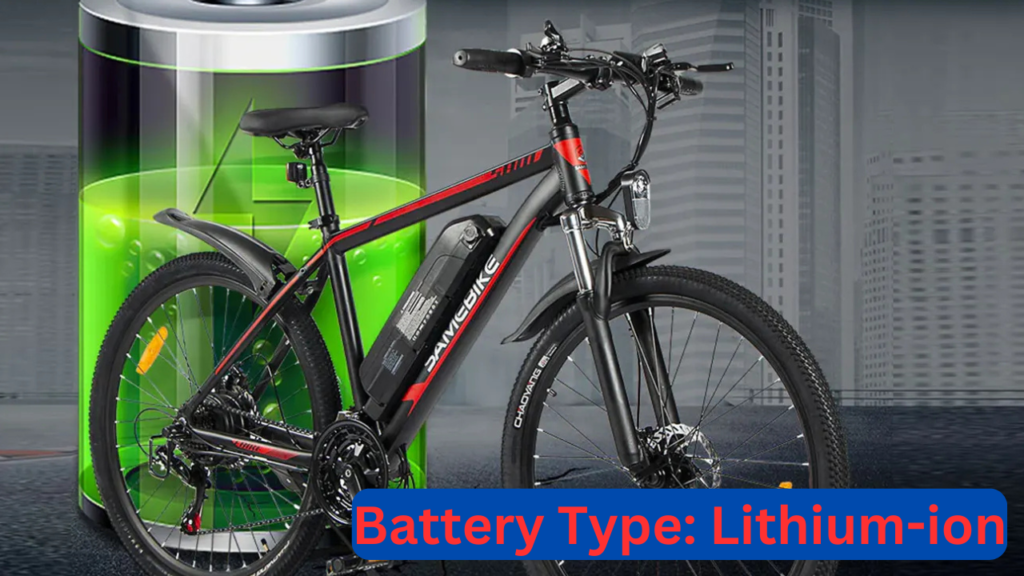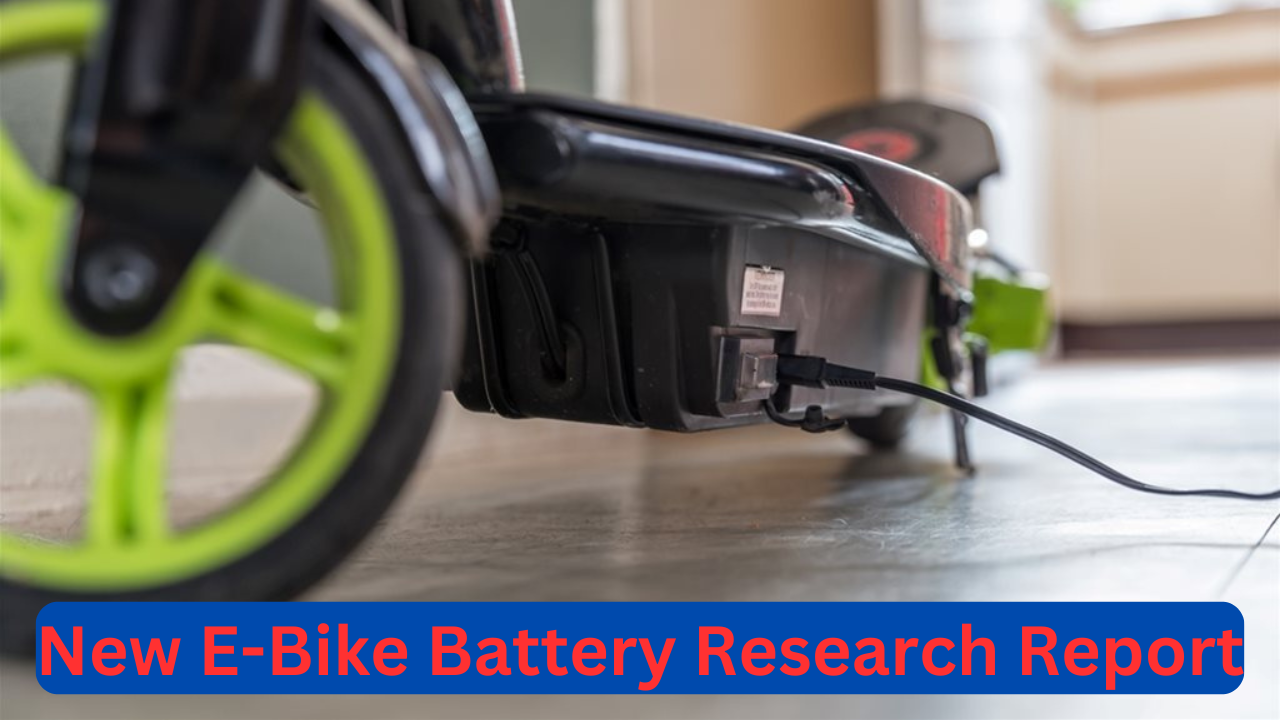New E-Bike Battery Research Report: The UK government has published a groundbreaking research report on the safety of e-bike and e-scooter lithium-ion batteries, chargers, and conversion kits. Conducted by the Warwick Manufacturing Group (WMG) at the University of Warwick and published by the Office for Product Safety and Standards (OPSS) on 29 January 2025, the report provides critical insights into the safety challenges posed by Personal Light Electric Vehicles (PLEVs). With the rapid growth of PLEV usage over the past decade, the report highlights the urgent need for improved safety standards to address the increasing number of battery-related fire incidents.
The research combines real-world evidence with scientific data to explore how battery failures occur during use, including scenarios of misuse or modification. It also examines the manufacturing processes and materials that contribute to safer lithium-ion battery designs. One of the key findings is the inconsistency in safety standards between e-bike and e-scooter batteries, with WMG’s laboratory tests revealing a clear correlation between the price-per-unit-of-energy and safety outcomes. Higher-priced batteries, featuring better-designed safety circuits and advanced electronics, were found to effectively prevent thermal runaway through a combination of passive and active protection systems.
The report emphasizes the importance of designing batteries and battery management systems (BMS) with the assumption that single-cell thermal runaway will occur. It calls for stricter legislation, improved standards, and better consumer education to mitigate risks. With nearly 200 fire incidents and 10 fatalities reported in 2023 alone, the findings underscore the need for immediate action to enhance the safety of PLEVs and their components.
Also read: EVs, CNG & Flex-Fuel Vehicles to Lead New Car Launches in India
Specifications and Features
The WMG report delves into the technical aspects of PLEV batteries, offering a detailed analysis of their design, performance, and safety features. Below is a summary of the key specifications and features highlighted in the research:
| Feature | Details |
|---|---|
| Battery Type | Lithium-ion |
| Safety Mechanisms | Passive and active protection systems, advanced safety circuits |
| Testing Methods | Mechanical abuse (crushing, penetration), thermal abuse, electrical abuse |
| Price-Per-Unit-Energy | Higher-priced batteries offer better safety outcomes |
| Thermal Runaway Prevention | Designed to detect and mitigate single-cell thermal runaway |
| Manufacturing Standards | Emphasis on cell production quality and abuse testing methodology |
| Consumer Advice | Recommendations for safe charging and usage practices |
Performance and Design
The performance of PLEV batteries was rigorously tested under laboratory conditions, simulating real-world scenarios such as mechanical damage, overheating, and overcharging. The results showed that batteries with higher price points and sophisticated electronics were more effective in preventing thermal runaway. These batteries are designed with robust BMS that detect potential causes of thermal runaway and act to prevent it, ensuring safer operation.
In terms of design, the report highlights the importance of using high-quality materials and advanced manufacturing processes to enhance safety. Batteries with better-designed safety circuits and electronics were found to be more reliable, even under extreme conditions.
Price Details and Launch Date
While the report does not specify exact pricing for individual batteries, it emphasizes the correlation between cost and safety. Higher-priced batteries, which offer superior safety features, are recommended for consumers seeking reliable and secure PLEV options. The research was published on 29 January 2025, with the findings expected to influence future legislation and industry standards.

Unique Selling Points
- Enhanced Safety Features: Advanced protection systems to prevent thermal runaway.
- High-Quality Manufacturing: Use of premium materials and sophisticated electronics.
- Comprehensive Testing: Rigorous abuse testing under laboratory conditions.
- Consumer-Centric Design: Focus on safe usage and charging practices.
- Regulatory Impact: Recommendations for improved legislation and standards.
New E-Bike Battery Research Report Conclusion
The WMG research report marks a significant step forward in understanding the safety challenges associated with PLEV batteries. By combining real-world evidence with scientific analysis, the report provides valuable insights into the causes of battery failures and offers actionable recommendations to mitigate risks.
The findings highlight the importance of designing batteries with the assumption that thermal runaway will occur, ensuring that BMS are equipped to detect and prevent such incidents. This proactive approach is crucial for enhancing the safety of PLEVs and protecting consumers.
The report also calls for stricter legislation and improved standards, emphasizing the need for better consistency in safety requirements across the industry. By addressing these issues, the government and stakeholders can work together to reduce the number of battery-related fire incidents.
For consumers, the research underscores the importance of investing in higher-quality batteries with advanced safety features. While these options may come at a higher price, the added security and reliability they provide are well worth the investment.
Ultimately, the WMG report serves as a call to action for manufacturers, regulators, and consumers alike. By prioritizing safety and adopting the recommendations outlined in the research, we can create a safer environment for the growing number of PLEV users.
New E-Bike Battery Research Report FAQs
1. What is the main focus of the WMG research report?
The WMG research report focuses on understanding the safety challenges associated with lithium-ion batteries used in e-bikes and e-scooters. It examines the root causes of battery failures, including scenarios of misuse, modification, and manufacturing defects. The report also evaluates the effectiveness of current safety mechanisms and provides actionable recommendations for improving battery design, manufacturing standards, and consumer safety practices. By combining real-world evidence with scientific data, the report aims to reduce the number of battery-related fire incidents and enhance the overall safety of Personal Light Electric Vehicles (PLEVs).
2. How does the price of a battery affect its safety?
The research found a clear correlation between the price-per-unit-of-energy and the safety outcomes of PLEV batteries. Higher-priced batteries, which are typically manufactured with better-designed safety circuits, more sophisticated electronics, and higher-quality materials, were shown to be more effective in preventing thermal runaway. These batteries incorporate both passive and active protection systems that detect and mitigate potential risks, such as overcharging, overheating, or mechanical damage. In contrast, lower-priced batteries often lack these advanced safety features, making them more susceptible to failure and fire incidents.
3. What are the key safety features of high-quality PLEV batteries?
High-quality PLEV batteries are designed with several advanced safety features, including:
- Passive Protection Systems: These include physical barriers and materials that prevent damage to the battery cells.
- Active Protection Systems: Advanced electronics and sensors that monitor the battery’s condition in real-time.
- Battery Management Systems (BMS): A robust BMS detects potential causes of thermal runaway, such as overcharging or overheating, and takes corrective action to prevent failure.
- Thermal Runaway Mitigation: Designs that assume single-cell thermal runaway will occur and include measures to contain and mitigate its effects.
- Abuse Testing Compliance: Batteries that undergo rigorous testing for mechanical, thermal, and electrical abuse to ensure durability and safety.
4. What testing methods were used in the research?
The research involved extensive laboratory testing to simulate real-world scenarios that could lead to battery failure. The testing methods included:
- Mechanical Abuse: Crushing or penetrating the battery cells to simulate physical damage.
- Thermal Abuse: Exposing the batteries to extreme temperatures to test their resistance to overheating.
- Electrical Abuse: Overcharging (applying over-voltage or charging over-current) and over-discharging (under-voltage or discharging over-current) to evaluate the battery’s response to electrical stress.
These tests were designed to replicate the conditions under which battery failures and thermal runaway might occur, providing valuable insights into the safety performance of different battery designs.
5. What recommendations does the report make for improving battery safety?
The report makes several key recommendations to improve the safety of PLEV batteries:
- Stricter Legislation: Introduce more consistent and stringent safety standards for PLEV batteries, covering aspects such as cell production quality, abuse testing, and functional safety.
- Improved Manufacturing Standards: Encourage manufacturers to adopt higher-quality materials and advanced safety features in their battery designs.
- Consumer Education: Provide clear guidance to consumers on safe charging and usage practices to minimize the risk of battery failure.
- Incident Data Collection: Establish a system for collecting and analyzing data on battery-related incidents to identify trends and areas for improvement.
- Increased Accountability: Impose greater obligations and penalties on companies that sell unsafe PLEVs or batteries.
6. How can consumers ensure the safety of their PLEV batteries?
Consumers can take several steps to ensure the safety of their PLEV batteries:
- Invest in High-Quality Batteries: Choose batteries from reputable manufacturers that incorporate advanced safety features.
- Follow Manufacturer Guidelines: Adhere to the recommended charging and usage practices provided by the manufacturer.
- Avoid Modifications: Refrain from modifying or tampering with the battery or charger, as this can increase the risk of failure.
- Monitor Charging: Avoid overcharging the battery and use only the charger provided by the manufacturer.
- Inspect Regularly: Check the battery for signs of damage, such as swelling, leaks, or unusual heat, and replace it if necessary.
7. What impact will the report have on future legislation?
The WMG research report is expected to have a significant impact on future legislation and industry standards. The findings highlight the need for stricter and more consistent safety requirements for PLEV batteries, which could lead to the introduction of new regulations. These regulations may cover areas such as cell production quality, abuse testing methodologies, and functional safety standards. Additionally, the report’s recommendations for better incident data collection and consumer education are likely to influence government policies and industry practices. By addressing the root causes of battery-related fire incidents, the report aims to create a safer environment for PLEV users and reduce the risks associated with lithium-ion batteries.










